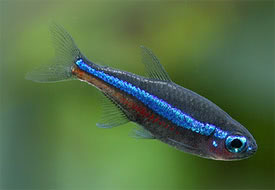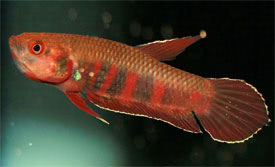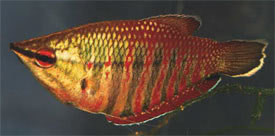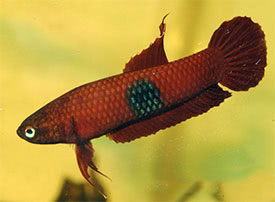
 Magyarul / Hungarian
Magyarul / Hungarian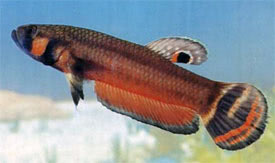
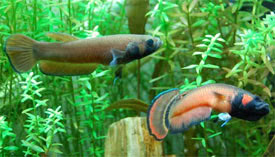

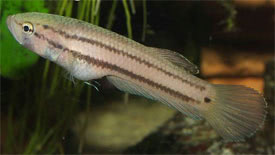
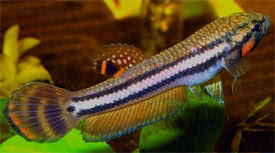
- Scientific name: Betta macrostoma
- Synonyms: -
- Common name: Brunei Beauty
- Group: Labyrinth fishes
- Habitat:Asia; Brunei Darussalam and Northwest Borneo in the state of Sarawak.
- Size: 10-11 cm
- Biotope: Inhabits in nearly stagnant shady pools with rock or gravel substrate and some leaf litter. Also found in relatively fast-flowing and clear blackwater streams with very soft and acidic water (pH under 5).
- Social behavior: Not recommended for a community aquarium. Best kept in pairs in a species tank. Males will fight with each other, and even females will fight until a hierarchy of dominance forms.
- Diet: Omnivorous; in nature they eat small insects, in aquarium they accept live and frozen foods and even quality flake foods. A varied diet of live foods such as Artemia or bloodworm will help the fish to develop their best color. Take care not to overfeed them.
- Breeding: Hard
- Tank: Minimum 70 litres
- Population: 1 pair for 70 litres
- Decoration: Use well-planted tanks with hiding places made of roots, but most breeders use bare-bottomed tanks. The addition of dried oak leaves or peat extract is recommended. Use dim lighting, and cover their tank well, as they are excellent jumpers and are susceptible to cold air!
- Temperature: 20-26 °C
- pH: 3.5-6
- Hardness: 0-10 NK°
- Lifespan: 3-5 years
Description: Betta macrostoma has been found in the hobby since the early 1980s. Its latin name „macrostoma” means big mouth, what is very fitting. Because of its restricted natural range, the fish is added to the IUCN Red List of Threatened Species. As a result of the Sultan of Brunei has banned the species from export, the fish in the hobby are likely captive bred, or originated from Sarawak where the species isn’t protected by law. Another unfortunate rumor that the habitat in Sarawak will be turned into an oil palm plantation in the near future, so that population may be lost forever. This is why their aquarium breeding is so important. Brunei Beauty has a high price when rarely available, so it would be wise, that only those aquarist would buy the fish, who can breed them. It is not recommended for the beginners! Males have a very rich orangish brown body color, with black striping on the caudal, anal and dorsal fins. There is a black spot on the dorsal fin outlined in iridescence of yellow or orange, and sometimes blue. The outer edges of the top of the caudal and dorsal fins have a bluish iridescence glow. Males also have a vertical black band behind the gill cover and their mouths also black. Females have a brownish-grey body color with two black horizontal lines running the length of the body, these will be more vivid when the fish is stressed.
Males are a little larger than females, and more colorful, also they develop more extended fins as they mature. The head profile of the male is also stockier, as he holds the eggs during incubation. Breeding is not too difficult if they are provided with the correct water conditions and diet. Betta macrostoma is a paternal mouthbrooder and the most difficult is getting the male to hold a brood for the full term. The tank should have a tight cover as the fry need access to a layer of warm, humid air or the development of the labyrinth organ can be impaired. During courtship the male turns to a very intensely bright orange, and approaches the female with erect fins, while the female also flares her fins in response. This can be last for several hours before spawning. During spawning the male and female will embrace each other, and while the female releases the eggs, the male fertilises them. Both fish start to collect the eggs with their mouth, and the female trasfers them directly into the mouth of the male after a synchronization of the mouth movements. Brood size is quite small, with even 10 fry being considered a good number. After spawning the male seeks a hidden or shaded spot and will lose much of his colour during the incubation period, which can be 14 to 35 days. Many breeders leave the female in the tank, as the male needs peace during incubation, and males are notorious for swallowing broods of eggs after a few days, especially when they are disturbed. After incubation the male will release the fully-formed, 5 mm long fry from his mouth. They can be fed freshly hatched brine shrimp nauplii.The fry grow very slow, reaching full maturity close to a year old. Frequent small waterchanges are essential.








